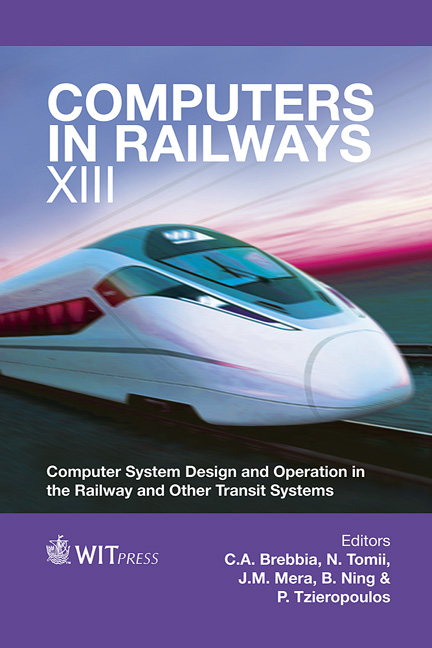Numerical Optimisation Of The Charge/discharge Characteristics Of Wayside Energy Storage Systems By The Embedded Simulation Technique Using The Railway Power Network Simulator RTSS
Price
Free (open access)
Transaction
Volume
127
Pages
10
Page Range
583 - 592
Published
2012
Size
3,028 kb
Paper DOI
10.2495/CR120491
Copyright
WIT Press
Author(s)
K. Shiokawa & R. Takagi
Abstract
Railways have been believed to be the best mode of transport in terms of energy consumption. However, because other modes of transport are rapidly catching up and improving energy efficiency, the railway industry is now keen to reduce its energy consumption. Recent years have seen the active development of high performance secondary batteries for pure and hybrid electric vehicles. It is believed that these batteries can be applied to electric railways to reduce energy consumption. The ESSs (Energy Storage Systems), in which batteries are used as storage media, can be installed somewhere in the power supply network for railways to charge electric energy when there is excessive regenerated power in the network. These ESSs can also be used to assist the supply substations when there is a high power demand. ESSs can be installed either as stationary wayside installations or as added equipment on-board the running trains. In this paper, the wayside installation type will be discussed. In Japan, several ESS installations have already been commissioned and are in use within the working railway power networks. However, the \“properness” of their charge/discharge characteristics has not been actively evaluated. It is believed that small changes in the voltage-current characteristics of an ESS may have a significant impact on the actual effect of the introduction of the ESS itself. The effects of the introduction of ESSs can be evaluated using the multi-train power network simulation program. Once the characteristics of the ESSs are
Keywords
optimisation, DC power feeding networks for electric railways, energy storage systems, multi-train power feeding network simulator, electric railways





